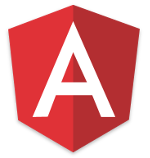
A few days ago i started teaching myself Angular 2, which is the successor of the popular frontend web-framework AngularJS 1.x. It is still in development and only released as a beta and the developers at Google recommend to not use it in production yet. But I’m sure it will come some time in the near future so why not take a step ahead and already learn it now? As Angular 1 has become very successful and wide-spread for web-applications’ client side I have no doubts that Angular 2 will establish itself pretty quick too.
For those of you who are familiar with Angular 1 and have developed with it yet: according to what I’ve seen so far you will definitely need to take some time for learning Angular 2 – it is considerably different from the first version and got few major changes, at least in my eyes. Those changes include:
- Different syntax for directives in HTML: They have introduced parantheses (), brackets [], stars *, hashtags # and combinations of them to be used in your markup. E.g. parantheses () are used as attributes in HTML elements to bind to their events.
- There are no controllers anymore. Instead everything is based on (Web-)Components (as you may know them from Google Polymer – if you don’t check this out as well, it is pretty cool), which basically consist of the component’s logic and a view and define a new custom HTML element each. Almost everything in Angular 2 is a component, which enables the code to be even more structurable, more modular and more reusable. But it is a completely new way of thinking in comparison to Angular 1’s controllers.
- It is based on ES6 and TypeScript. ES6 is the latest JavaScript standard (or version so to say) and TypeScript is even a superset of that, which basically introduces types and modifiers for variables and functions (as you may know from strongly-typed languages like Java). This brings some completely new features and syntax you need to get familiar with. For instance you can define classes with attributes and methods like this now:
1
2
3
4
5
6
7
8
9
10
11class Greeter {
greeting: string;
constructor(message: string) {
this.greeting = message;
}
greet() {
return "Hello, " + this.greeting;
}
}
var greeter = new Greeter("world");</pre>
Also there are interfaces, import statements, a shorthand way for anonymous functions called “arrow functions” and many more. Before learning Angular 2 I really recommend to first learn JavaScript ES6 for which these two videos are really great.
- Dependency injection has also been reworked to be better understandable, easier to use and more modular now. You will no use @Inectable decorators for injectable services and other modules and provide in the modules by referencing to them in a providers property in components’ @Component decorator.
- Two-way data-binding is still available but the focus is now on one-way data-binding (if I got it right the main reason are performance considerations). One-way data-binding means that data isn’t continuously updated between template and component but only based on events triggered.
Those where just some of the major changes I got so far. If you want to learn Angular 2 I recommend you the following resources:
- Angular’s offical Getting Started
- Angular 2 Fundamentals (a free video course on Udemy for the very basic concepts)
- This video tutorial on YouTube which I found quite good (and I really had to laugh at 30:20 minutes). You can skip the first few minutes.
Being able to develop the brand new, fancy Angular 2 with the brand new JavaScript ES6 (which is so new that most of today’s browsers won’t even understand it and as a result it needs to get transpiled to ES5 at present) will definitely give you benefits in web development and also in finding a job in that sector – which is probably the fastest growing and most hyped one at the moment.

Comments